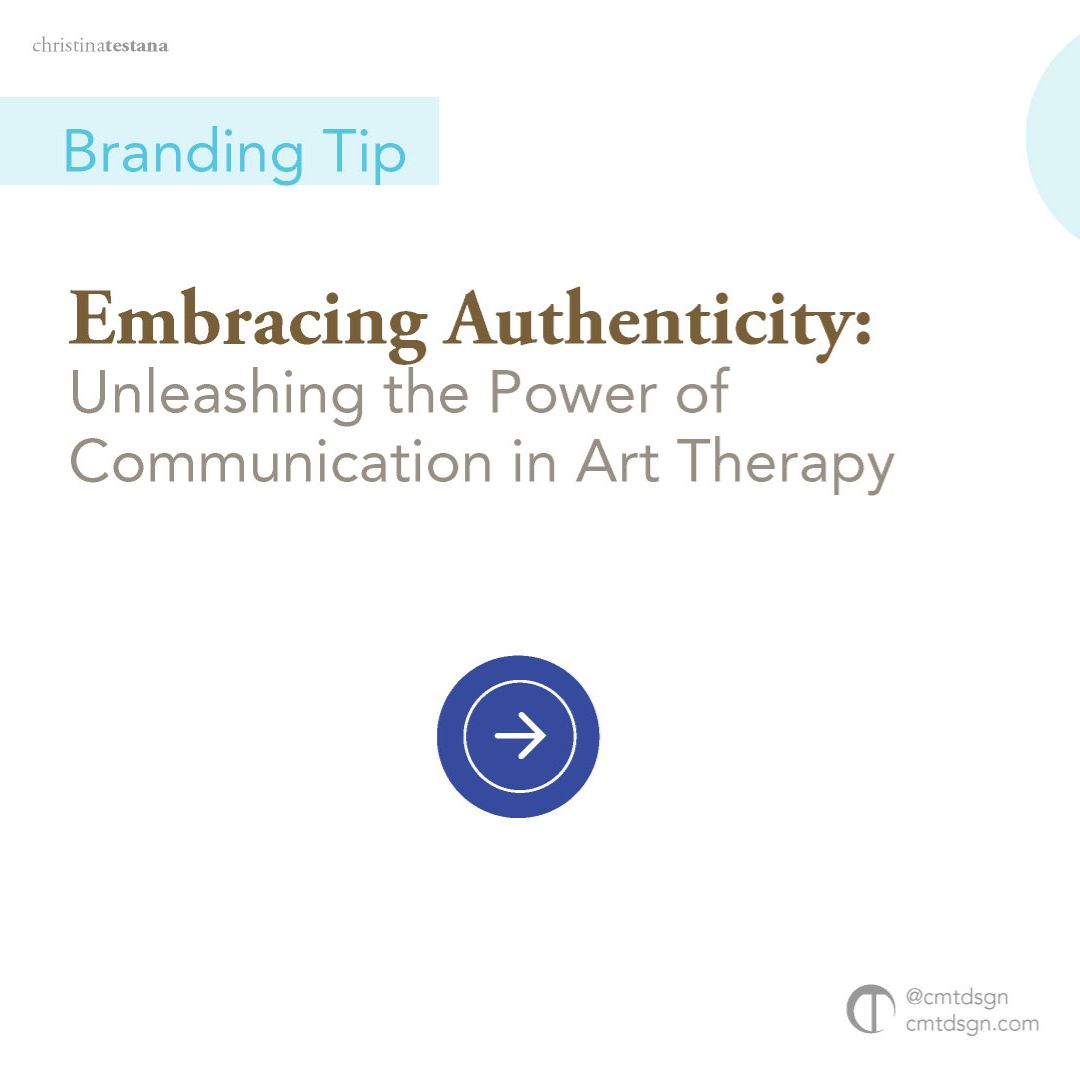Are you an art therapist desiring to build a loyal community that match your true identity for feeling in tune? “In tune” meaning consistent heart-to-heart communication that’s so deep and interesting keeping you both excited to meet again.
Do you wish for these clients to always return to you for everything that’s on their mind? because you are so genuine and living into your true self? Look no further! I will dive into the importance of embracing your genuine nature and using it seamlessly in your brand communication to harmonize and nurture your ideal audience.
Firstly, authenticity can’t only happen within therapeutic sessions; it needs to stretch beyond that plane into a more holistic scale, which is your brand identity. This lies within the act of consistency through all touchpoints and interactions you have with your ideal client that are outside the session.
So saddle up and get ready to unlock positive change in your art therapy business.
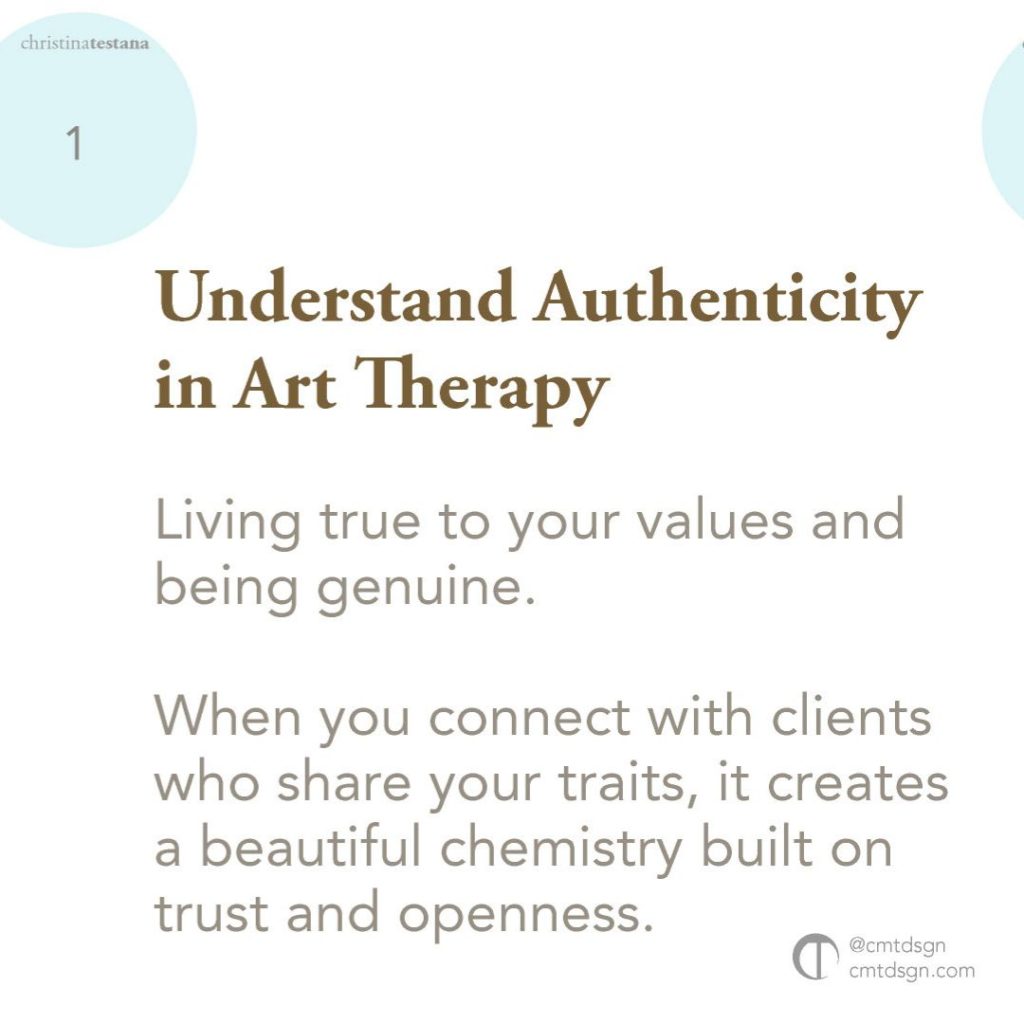
Understanding Authenticity in Art Therapy
Authenticity holds countless meanings, but how I see it for art therapists is someone who is living into their values and being overall genuine and carrying themselves with true integrity. By being authentic in art therapy, you will feel real to your ideal client and help them on a much deeper scale.
How so, you may ask? When you find your ideal client who matches your real traits and personality, you both share the same chemistry, and that in itself is beautiful. This unlocks trust and creates a safe environment for your ideal client to open up to you and feel comfortable in expressing themselves freely.
If you are struggling to keep clients or establish a client base, the problem may lie within yourself. Are you being true and honest with yourself, and are you attracting the RIGHT people that you connect the best with and find it easy to get along with?
Be real and true because that’s what attracts people to you. They see you for who you are and they look for people they can trust, not someone who wears a mask to get people onboard. Clients can sense who’s fake and who’s true.
Let’s go even deeper into the essence of genuineness and integrity.
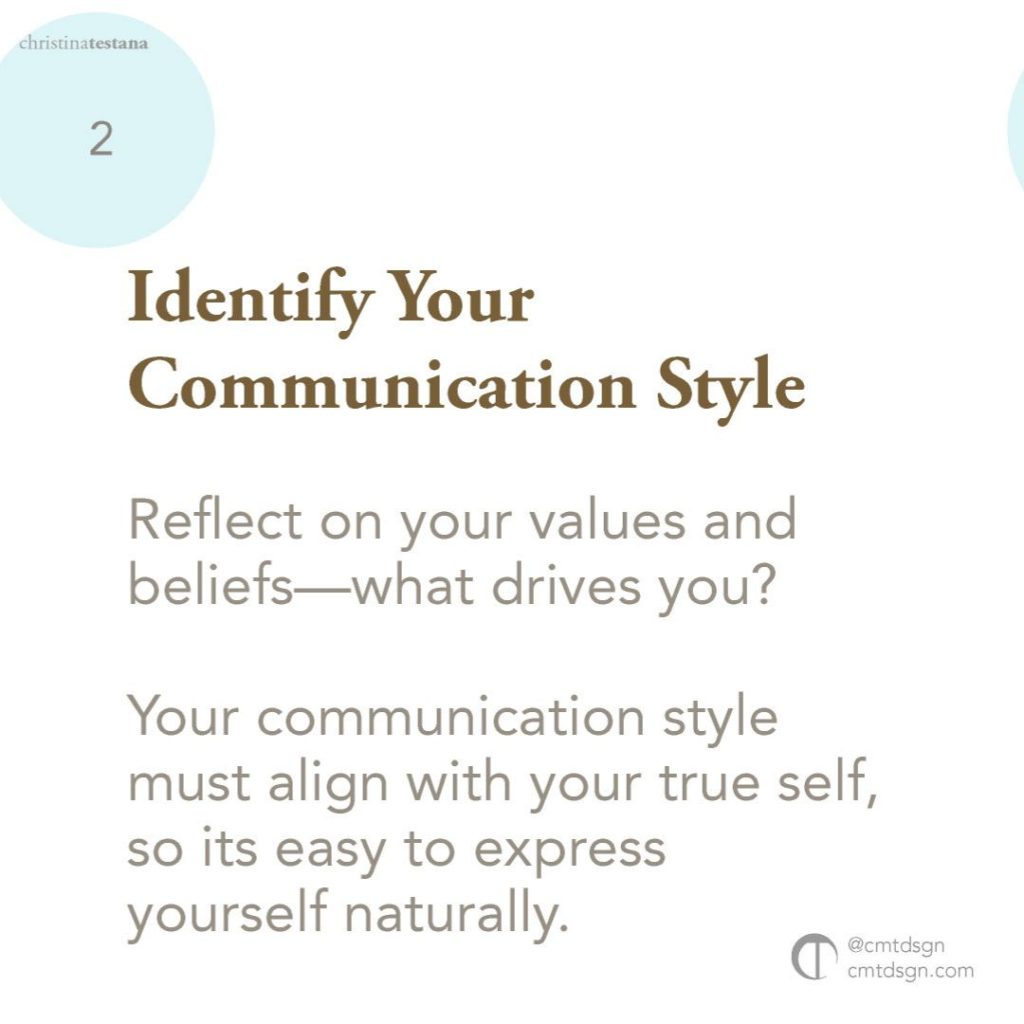
Identifying Your Communication Style
Reflecting on Personal Values and Beliefs
Before authentic brand building, the first step in identifying your communication style is reflecting on your personal values and beliefs that you hold dearly and something that you live into day-to-day. They must be something that comes easy to you and that you naturally implement in your work so that there is no push to make an effort.
No art therapist is the same; each holds different values and beliefs because they all have different backgrounds, cultures, stories, experiences, and upbringings. This is where you start to differentiate yourself and create your personal identity to stand out as an individual and express yourself in this way through the use of your brands. Your brand acts as a megaphone to spread the word consistently about you and what you bring to this world and call to those who share the same values and beliefs as you. This creates a connection that fosters integrity.
What drives you? What are your core values? By understanding these aspects of your true self, you can integrate them into your brand communication and messaging. Integration of your values and beliefs makes you look more sincere in nature and leads with purpose and intention. This makes you look attractive to your ideal client because you are being real and clear, and this approach resonates with them on a deeper level. This encourages curiosity within them, wanting to know more about you.
Assessing Communication Strengths and Weaknesses
Now, let’s take a closer look at your communication style alignment. Be honest with yourself here, what is the best form of communication for you? Is it verbal, visual, or writing? Evaluate in an honest manner what you are currently doing.
Evaluate your current approach honestly, how are you reaching your ideal audience right now? Is it something that is easy to implement? Ensure you are communicating in your most natural form.
Play to your strengths, know your strengths in the realm of communication. Write a journal response to yourself: What are my strengths? Where do I have room to grow? In the area of my strength, identify one area for improvement to fine-tune my communication skills and make them even more effective and impactful.
Focusing on strengths is a little less energy-draining than working on your weaknesses; those you can address at a later date. Right now, it’s about enhancing your strength and using them to play a part in your genuine nature.
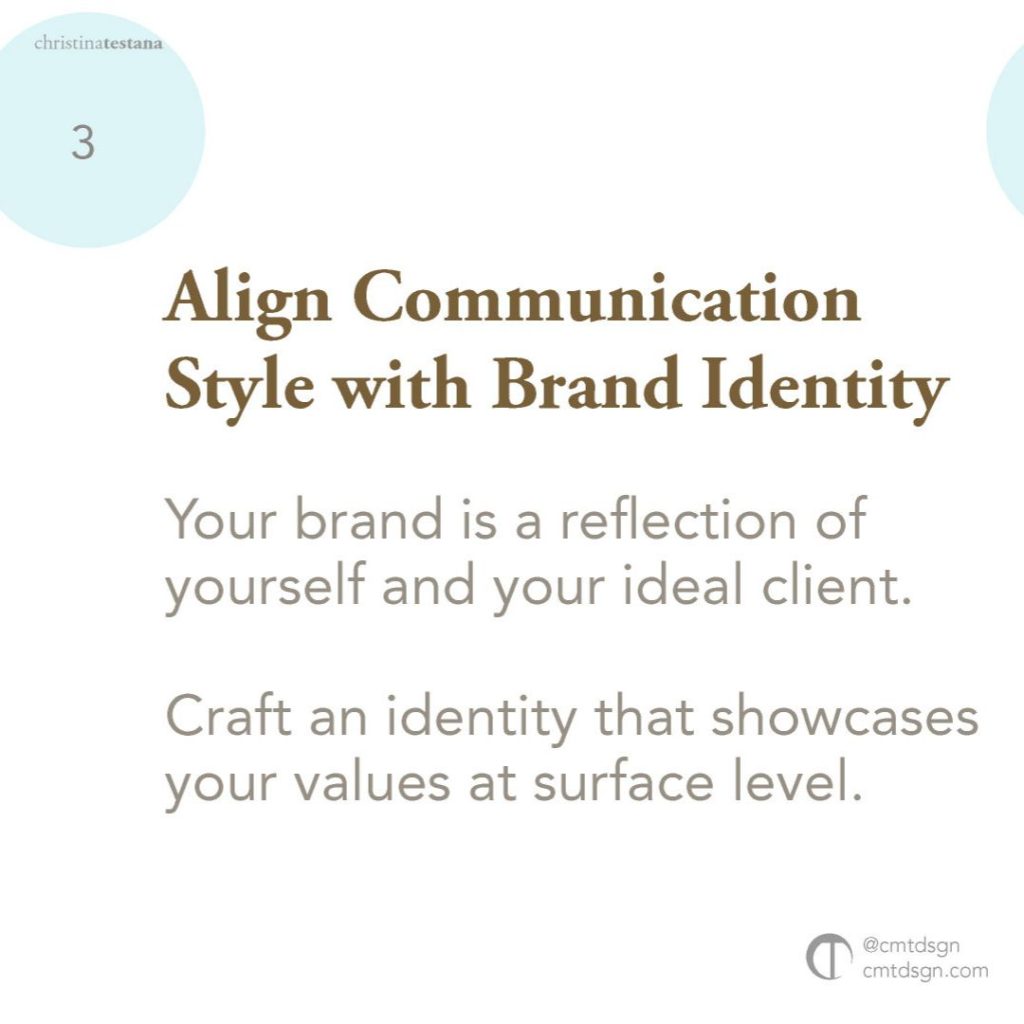
Aligning Communication Style with Brand Identity
Defining Your Art Therapy Brand
Once you have learned about your values and beliefs and how you express yourself, these are what I call foundational factors in brand identity connection. It’s now time to showcase those traits at the surface level, which is your brand identity. People will get a first impression of you when they see your brand identity and engage with it to get an idea of the type of person you are.
Your art therapy brand is a reflection of your ideal client but also yourself as an art therapist—the marriage of both worlds to form a unique identity that triggers curiosity to go deeper. Your communication style will show itself in your brand identity through voice and language, the words you use, imagery you select and craft, illustrations and fonts selected, and lastly, the stories you share. These all carve out a distinct space for yourself in the art therapy world and enhance your communication style to paint the picture of what it is like to work with you. Discover what makes you stand out, embrace it, and integrate it into your communication style.
Pinpoint How You Sound and the Type of Voice You Use
I want to highlight this part in your brand communication that art therapists miss and skip over. This is necessary, especially when it comes to writing or filming content! Your brand voice is an essential component to touch hearts and deliver value, but not only that, this is a perfect glimpse of how you sound to people. Be consistent with your voice, try to write down three adjectives that describe your voice, and use them as an anchor for the rest of your writing and interactions.
Build out templates of emails, Instagram posts, and blogs with your brand voice to use as a boilerplate to help you keep to your style of writing and communicating.
Consistency in Communication
In brand building, consistency is key for building a strong art therapy business, and that’s achieved with the use of internal systems. These systems help to make communication fluid and easy; you can see it as a manual for your brand. Keeping your brand genuine means your messaging, visuals, and feel need to remain cohesive and seamless across social media platforms, your website, and emails.
When your communication style aligns with your brand values, everything has purpose, and everything is working in harmony, making you recognizable. You are memorable to your ideal client because you are creating memorable experiences.
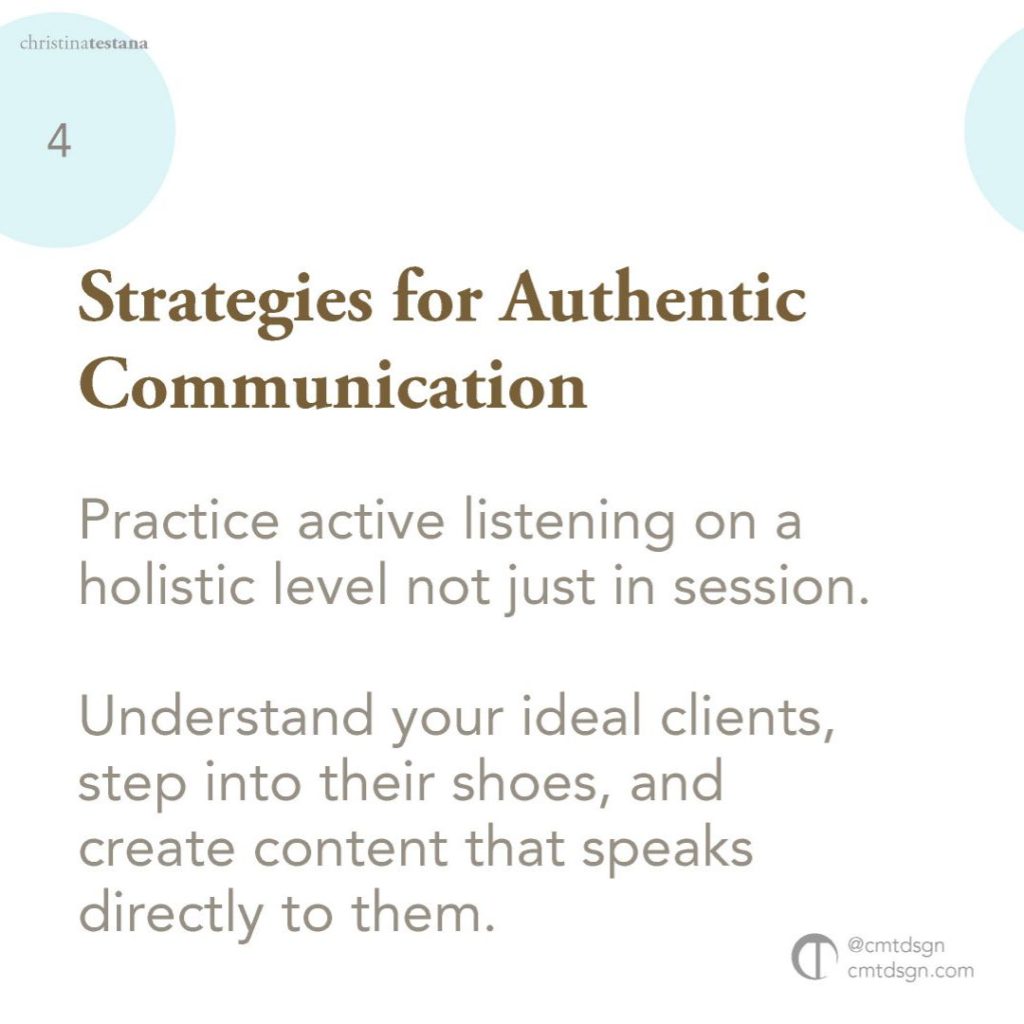
Strategies for Authentic Communication
Active Listening and Empathy
Active Listening
One of the best ways to put your ideal client first and to fully understand them is by active listening. I am sure you do this in your sessions, but continuously use it outside of the session as well. You will be engaging with your ideal audience over social media daily, so this skill is useful here when collecting data. Analyze and confirm this data with your audience so that you can bring positive change strategies to your marketing plan and create valuable content and offers that match their wishes.
In sessions, fully indulge in your clients’ stories and experiences. This creates a safe space for them to express themselves and explore their feelings.
Empathy
This skill plays a huge role both in sessions and out of sessions. Understand your ideal client by stepping into their shoes and seeing what they see. This gives you the perspective of how they speak and function, allowing you to build content that speaks to them directly and gives you an idea of what they expect from you. The expectations can be that they look for someone who sounds comforting and shares daily tips about anxiety in the workplace. Take lots of time here because it helps your ideal client feel seen and heard and not be someone who is just a one-and-done thing.
Genuine and Transparent Expression
Proactive art therapists, I understand you need to set boundaries in social situations with your clients in session. But clients desire a therapist who is open and honest, not someone who is too cold and reserved.
Clients want someone who is genuine and relatable so they open up to you and express themselves freely, without judgment. It’s all about the atmosphere you create for clients. Not only that but the effort you put into branding, marketing, and storytelling to unlock these types of deep interactions.
Continue to practice this way of connection with your ideal client both online and in-person and other touchpoints of interaction, and you will see your community grow.
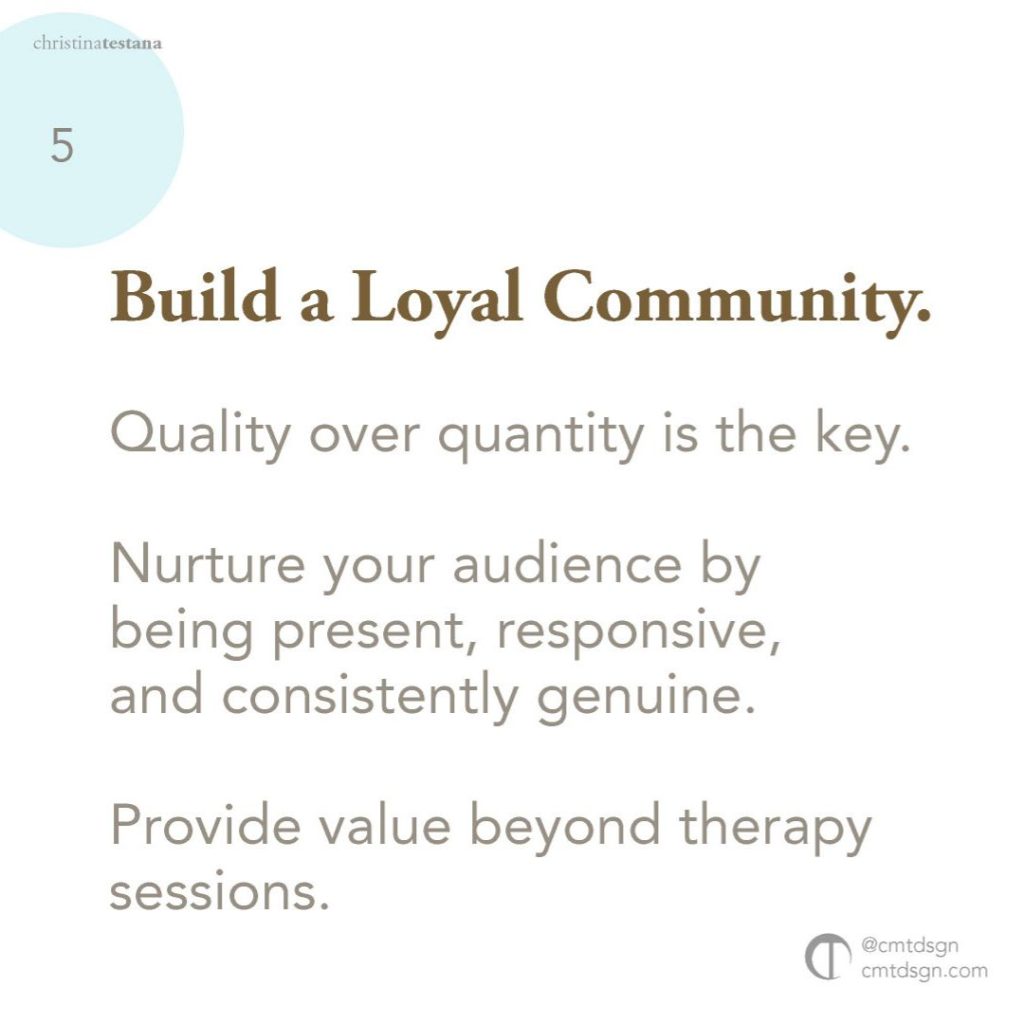
Building a Loyal Community
Nurturing Relationships with Clients
Lastly, it’s all about loyal community building so your art therapy brand stands tall. Being genuine in nature continues to help you live into your true form and build long-lasting relationships with your clients. This is the secret to establishing a solid client base, and I know this is something you desire. It’s not about having a big following; it’s about quality, having a small following of people who love what you do and are who you desire to work with. Nurture these good quality connections by being present, responsive, and consistently genuine. Don’t be afraid to ask them questions and learn about them; it’s all about being curious. Your clients will appreciate your authenticity and loyalty; creating a strong emotional connection goes beyond the boundaries of therapy sessions.
Creating Value for Your Community
Implement the value-driven approach and provide value upfront beyond your therapy sessions. Craft high-quality content that answers their biggest questions or shifts mindsets. Bring them value upfront; it’s a stepping stone to building trust, gaining insights, and building resources with your community. Create amazing online events for them, such as workshops, webinars, or live events. Engage with them through social media platforms, workshops, and events. By offering continuous support and thrilling experiences, you cultivate a loyal community that values your expertise and guidance.
Authenticity in art therapy is a catalyst for growth, transformation, and success. By aligning your communication style with your brand, you create a powerful unity that resonates with your clients and grows your art therapy business. Embrace your authentic self, listen actively, express genuinely, and build a loyal community that values and appreciates the incredible work you do as an art therapist. It’s time to unleash the true potential of authenticity in your art therapy journey!
